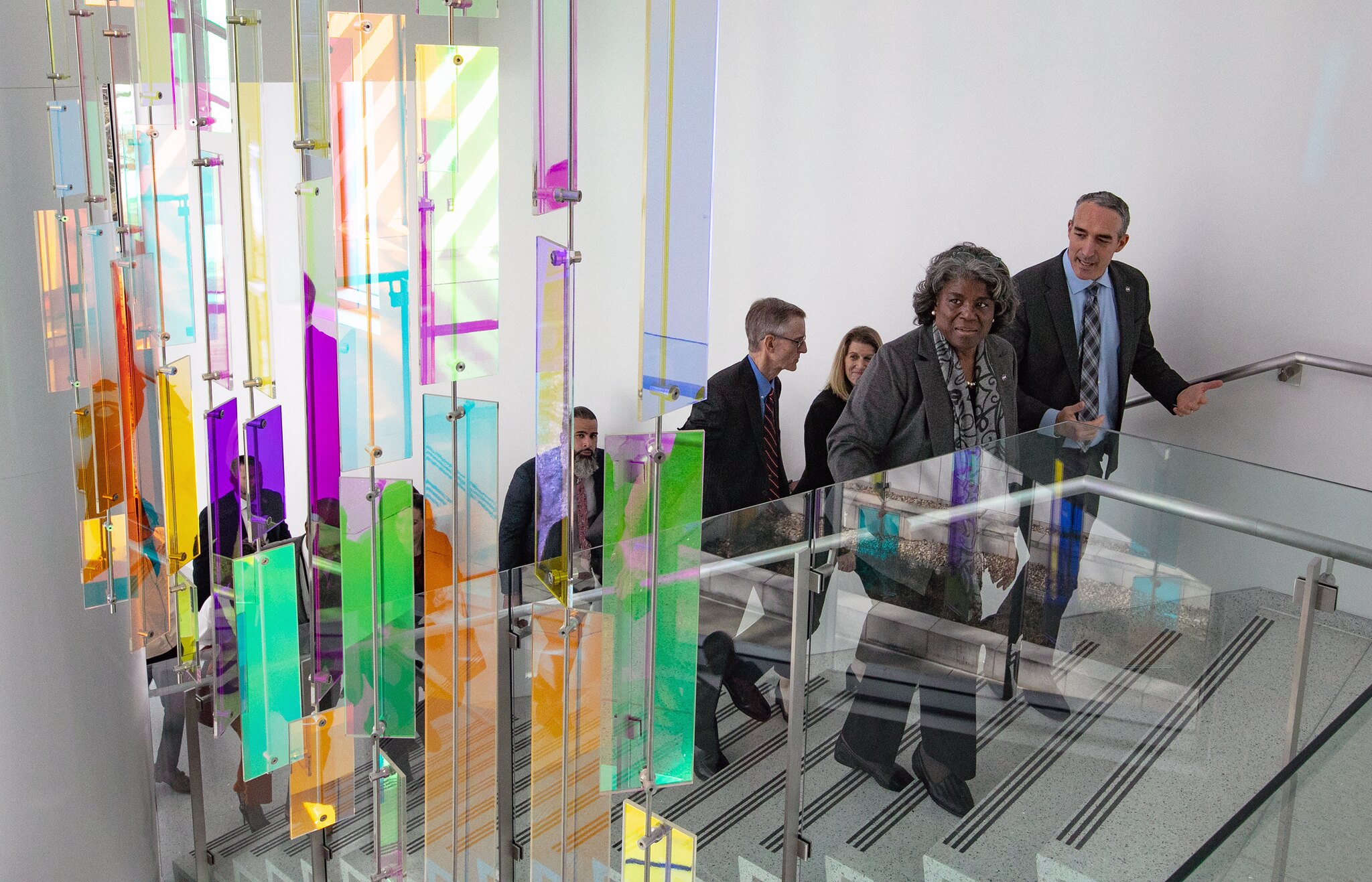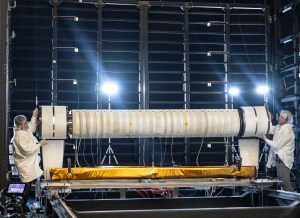The United States’ Ambassador to the United Nations Linda Thomas-Greenfield visited NASA’s Langley Research Center in Hampton, Virginia, Friday, Feb. 10 to learn more about NASA’s contributions to global climate research and Langley’s rich, long history.
The United States’ Ambassador to the United Nations Linda Thomas-Greenfield visited NASA’s Langley Research Center in Hampton, Virginia, Friday, Feb. 10 to learn more about NASA’s contributions to global climate research and Langley’s rich, long history.
An overview of that history kicked off the visit. Langley’s Chief Technologist Julie Williams-Byrd talked to the Ambassador about distinguished alumni from the center’s past, including Langley’s Hidden Figures — women of color such as Katherine Johnson, Mary Jackson and Dorothy Vaughn, whose tremendous intelligence and skill as “human computers” during the space race helped them overcome gender and color barriers of the era. Margot Lee Shetterly detailed their stories in her 2016 book “Hidden Figures,” which was also adapted into a popular movie.
Much of the visit focused on NASA’s efforts to better understand Earth and its climate, and to make its taxpayer-funded research data available to the public, which aligns with the Ambassador’s work in the UN, where she sits on the Security Council.
“Climate is an existential threat,” said Ambassador Thomas-Greenfield. “It is important that we deal with climate change as that threat, including in the security council. Climate and environment actually impacts peace and security, and so we strongly believe we have to deal with it.”
Near a model of the Stratospheric Aerosol and Gas Experiment III (SAGE III) on the International Space Station, Langley’s Deputy Director Dave Young talked to Ambassador Thomas-Greenfield about using said instrument to monitor the ongoing recovery of the ozone layer.
The Earth Information Center was also a topic of interest. Announced by NASA Administrator Bill Nelson in 2021 and still in development, the Earth Information Center will allow users to see how Earth is changing and provide easy-to-use information and resources that will support decision makers as they develop tools to mitigate, adapt and respond to climate change.
The conversation steered toward food security as well — a topic of concern for the Ambassador. NASA’s Associate Program Manager for Ecological Conservation Laura Rogers and Prediction of Worldwide Energy Resource (POWER) lead Paul Stackhouse spoke with her about efforts to connect farmers in African countries — including Kenya, Senegal and Nigeria — with NASA solar data to help them better plan crops.
The Ambassador even had an opportunity to see a piece of technology Langley researchers are currently developing — a new version of an instrument called High-Spectral Resolution Lidar, or HSRL. From an airborne platform, HSRL uses a laser to make measurements of clouds and tiny atmospheric particles called aerosols. It can also make measurements of phytoplankton blooms in the ocean. Phytoplankton play an important role in Earth’s carbon cycle because they absorb tremendous amounts of carbon dioxide and carry it to the bottom of the ocean when they die and sink.
Aside from learning more about NASA, Ambassador Thomas-Greenfield met with Taylor Scott, a Richmond resident who founded RVA Community Fridges, which promotes food security by placing refrigerators and pantries containing free fresh local produce in Richmond communities. Scott and some friends set up the first community refrigerator in 2021 and have since expanded to 10.
“I learned a lot today. I think I need to spend a whole day here,” said Ambassador Thomas-Greenfield. “Now I know that I have an ally in the US government that I can call upon whenever we are addressing issues of climate change.”
The Ambassador’s stop at Langley was part of a broader visit to the Hampton Roads area. She also toured the 1,000-bed hospital ship USNS Comfort with U.S. Senator Tim Kaine of Virginia and was scheduled to speak at an event at The College of William & Mary, where she was also set to receive an honorary degree.
































